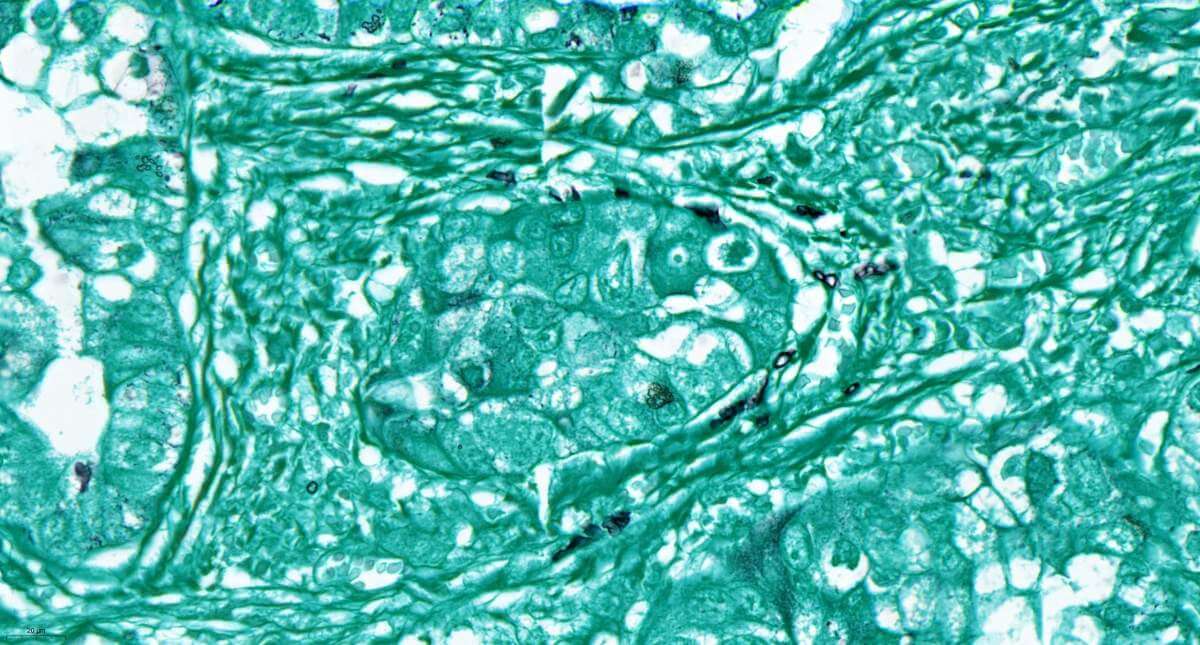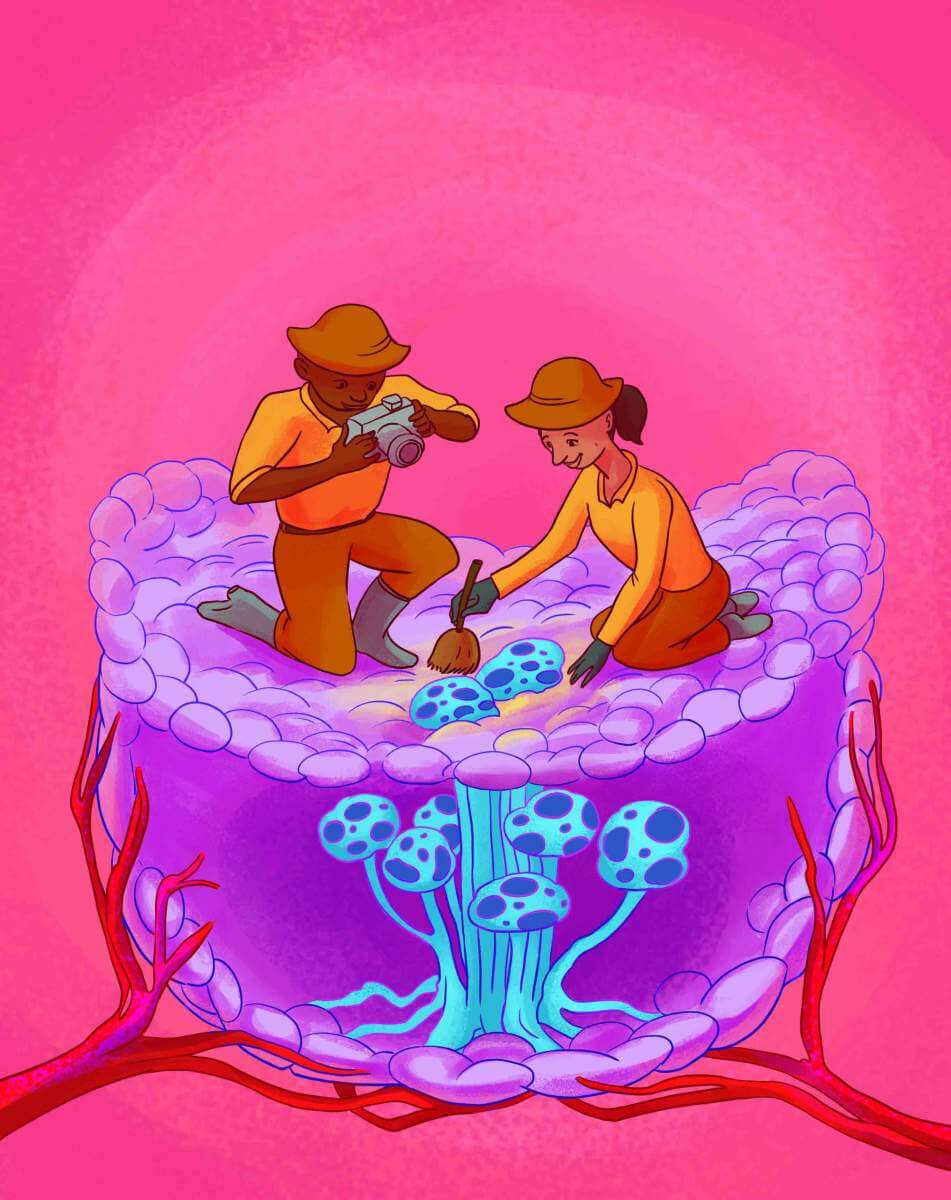The scientists of the Weizmann Institute of Science and their research partners have mapped the presence of fungi in 35 different types of cancer ■ The fungi that live inside the cancerous tumors may facilitate the detection, diagnosis and perhaps even the treatment of cancer ■ "Fungal presence is a new and significant hallmark of cancer"
Fungi of various species grow inside cancerous tumors, according to a large-scale study led by Weizmann Institute of Science scientists in collaboration with researchers from the University of California, San Diego. in the study, the published On the cover of the scientific journal Cell, the researchers show that certain populations of fungi characterize different types of cancer. These findings are expected to have implications for the diagnosis and treatment of cancer and the possibility of its early detection through blood tests.
In recent years, it has become increasingly clear that malignant tumors contain microorganisms that influence the development of cancer, its tendency to form metastases and its response to treatment. About two years ago, researchers from the laboratory of Prof. Ravid Straussman In the Department of Molecular Cell Biology at the Weizmann Institute of Science, the presence of bacteria in a wide variety of cancerous tumors - from bone cancer to skin cancer. The new research from the laboratory now completes the picture and also maps the fungi found in these tumors and the various combinations of cancers, bacteria and fungi. "Tumours are complex ecosystems, which include, in addition to cancer cells, also cells of the immune system, connective tissue cells, blood vessels and many other components, which together constitute what is known as the tumor microenvironment," says Prof. Straussman. "Our studies, as well as studies conducted in other laboratories, clearly show that bacteria, and now also fungi, are an integral part of this microenvironment."

As part of the study, the researchers mapped out - led by Dr. Liane Naronsky-Haziza from the laboratories of Prof. Straussman and Prof. Chili pepper At the institute and Dr. Ilana Levitan from Prof. Straussman's laboratory - fungal presence in more than 17,000 samples of tumors or blood tests taken from patients with 35 different types of cancer. In all the types of cancer tested, it was possible to find fungi that were mostly "hiding" inside the cancer cells themselves or in the cells of the immune system found in the tumors.
The study revealed a correlation between the presence of certain fungi in the tumors and the patients' chances of survival. For example, breast cancer patients whose tumors thrive Malassezia globosa - a fungus that is naturally found on the skin - had much higher mortality rates than patients without this fungus in their tumors. It was also discovered that melanoma skin cancer tumors that do not respond to immunotherapy treatments were characterized by a certain type of fungus that was not characteristic of skin cancer tumors that responded to these treatments. A series of correlations were also discovered between certain types of fungi and certain age or habits: for example, it was found that certain fungi are more common in samples taken from elderly breast cancer patients compared to samples taken from young women or in lung tumors of smokers compared to non-smokers.

These findings all indicate that fungal presence is "a new and significant hallmark of cancer," says Prof. Straussman and adds: "These findings provide motivation to better investigate the potential effects of fungi on cancer." In fact, we need to reexamine almost everything we know about cancer through the 'microbiome lens' - that is, a point of view that takes into account the populations of microorganisms living in cancerous tumors."
"The fact that fungi can be found not only in cancer cells, but also in the cells of the immune system, implies that in the future we are expected to discover effects of the fungi on the functioning of the immune system as well", Prof. Pepper expands the story.
Find traces of fungi in the blood
The research team mapped not only the fungi in the cancerous tumors but also various combinations of bacteria and fungi, and discovered that characteristic clusters of these microorganisms exist in the tumors. For example, while crops containing fungi Aspergillus tend to host certain bacteria, growths characterized by fungi Malaysia tend to host other bacteria. Locating these clusters may prove to be significant when it comes to cancer treatment, as there are correlations between the presence of the clusters and the types of immune system cells in the tumor and the survival rates of the patients.
As part of the study, the feasibility of blood tests for the early detection of cancer based on the presence of fungal or bacterial DNA in the blood was also tested. In blood samples taken from cancer patients and healthy subjects, different signatures of microbial DNA were discovered - findings that indicate the possibility of developing blood tests for the early detection of cancer.
"The fact that we discovered fungi in most types of cancer in humans is both very surprising and expected," concludes Prof. Rob Knight, whose group at the University of California, San Diego was a research partner. "This is surprising because we have no idea how fungi find their way to tumors in all parts of the body. But this is also expected, because communities of bacteria and fungi that live together and communicate with each other, also characterize our healthy microbiome - in the gut, in the mouth or on the skin."
Omer Asraf, Dr. Deborah Neuman, Dr. Nancy Gebert, Ruthi Ariel and Arnon Meltzer from the Weizmann Institute of Science also participated in the study; Dr. Amir Bashan and Guy Amit from Bar-Ilan University; Prof. Iris Barshak, Dr. Nora Balint-Lahat and Gili Perry from Sheba Medical Center and Tel Aviv University; Dr. Einav Gal-Yam and Dr. Mia Dadiani from Sheba Medical Center; Cameron Martino, Dr. Antonio Gonzalez, Dr. Justin F. Shaffer, Dr. Sandeep Pravin Patel and Dr. Austin D. Swafford of the University of California, San Diego; Prof. Jason E. Stejic from the University of California at Riverside, Dr. Cheon Ju from Arizona State University and Dr. Gregory Spitch-Fore and Dr. Steven Wandro from the Micronoma Company in San Diego.
More of the topic in Hayadan:
